
July 25, 2023
Astrophysicists everywhere are riding the waves of discovery – gravitational waves. The recent NANOGrav collaboration announcement has sent ripples to the scientific community. After 15 years of diligent observation and data collection, they’ve detected the hum of the gravitational wave background echoing through the cosmos. It is louder than expected.
Scientists have recently discovered powerful ripples in the fabric of spacetime. These ripples are the strongest ever detected by scientists so far.
These gravitational waves carry a million times more energy than the sporadic bursts previously detected from black holes and neutron star mergers by the Laser Interferometer Gravitational-Wave Observatory (LIGO).
The detection and analysis of gravitational waves can provide groundbreaking insights into the nature of our universe. This can be achieved using data from LIGO and pulsar timing arrays.
The construction of such a colossal instrument, dedicated solely to understanding the universe, may seem impossible. However, it is possible with the knowledge of the thermal conductivity measurements of the materials used to build LIGO.
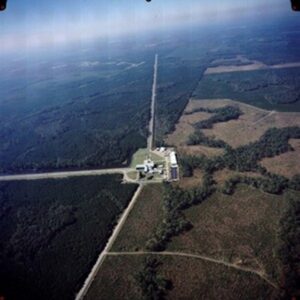
Figure 1.LIGO detector in Livingston, Louisiana. Courtesy Caltech/MIT/LIGO Laboratory
The Laser Interferometer Gravitational-Wave Observatory (LIGO) stands at the forefront of gravitational wave research. This experiment and observatory are designed to detect cosmic gravitational waves. It aims to pioneer gravitational-wave observations as a new branch of astronomy.
The interferometer, a critical component of LIGO, is constructed using steel and silica, enabling the detection of faint cosmic signals.
Interferometry is a widely used method in various scientific and engineering fields. It involves combining multiple waves to examine the resulting interference pattern.
This pattern can provide information about the waves’ phase, amplitude, and propagation direction. In LIGO’s context, interferometry measures the minuscule spacetime disturbances caused by passing gravitational waves.
Gravitational waves are ripples in the fabric of spacetime caused by some of the universe’s most violent and energetic processes. Albert Einstein predicted the existence of gravitational waves in 1916 in his general theory of relativity. These waves are produced by disturbances in mass distribution within a system and travel at the speed of light.
The Laser Interferometer Gravitational-Wave Observatory (LIGO) is a groundbreaking project funded by the National Science Foundation (NSF) and operated by the California Institute of Technology (Caltech) and the Massachusetts Institute of Technology (MIT). LIGO has two installations within the United States, one in Hanford, Washington, and the other in Livingston, Louisiana.
LIGO’s role in detecting gravitational waves is pivotal. It employs a Michelson interferometer, which divides a light beam into two beams traverse separate, perpendicular paths. These beams are reflected in their origin, combining to create an interference pattern.
A gravitational wave changes the local spacetime when it passes through the interferometer. This change in spacetime causes a modification in the interference pattern.
The precision and stability of LIGO’s construction are paramount. Gravitational waves make very small changes in the length of the interferometer’s arms. These changes are as tiny as one-thousandth of a proton’s diameter. The interferometer must be incredibly stable and precise to measure such tiny changes. This is why steel was chosen for the vacuum tubes and silica for the mirrors.
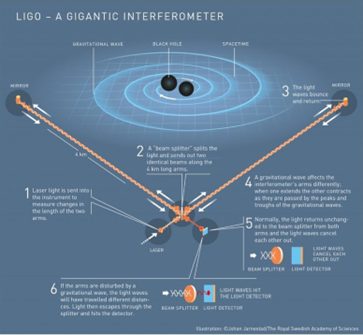
Figure 2. Diagram of a LIGO type gravitational wave detector. The two perpendicular arms of four km each are shown. The gravitational waves caused by the collision of two black holes can be detected in the interference pattern thanks to the extreme sensitivity of the device that allows resolving distances thousands of times smaller than the atomic nucleus. (Credit: Johan Jarnestad/The Royal Swedish Academy of Sciences [35])
LIGO stands as a beacon of modern scientific and engineering prowess. The construction of such a monumental scientific endeavor necessitated meticulous material selection, with steel and silica emerging as critical players.
Steel provides the requisite rigidity and stability for the vacuum tubes.
Silica mirrors are used simultaneously for their remarkable levelness and decreased vulnerability to thermal interference. This guarantees unrivalled accuracy in the measurements.
The vacuum tubes of LIGO are crafted from 3mm thick spiral-welded stainless steel 304L. Stainless steel 304 is renowned for its corrosion resistance, temperature endurance, strength, and vibration dampening. There are multiple grades of SS304, including stainless steel 304L, the ultra-low-carbon variant used in LIGO’s vacuum tubes.
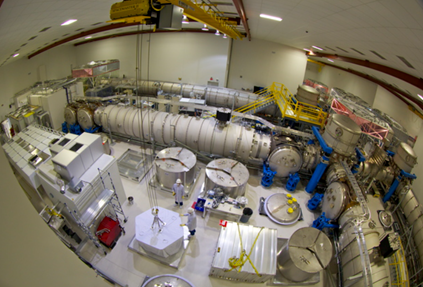
Figure 3. LIGO Hanford laser and vacuum equipment area. Courtesy Caltech/MIT/LIGO Laboratory
The beam tubes were assembled from segments welded together on site. These vacuum tubes are needed to prevent rust particles from forming. Rust particles could enter the vacuum system and interfere with the laser beam or other optical components.
The lower carbon content in stainless steel 304L minimizes unwanted precipitation resulting from welding.
Several key advantages of this material drove the selection of stainless steel 304L for LIGO’s vacuum tubes:
Stainless steel 304L is recognized for its high strength and durability. It can endure extreme conditions, making it an ideal choice for a project like LIGO, which demands robust and enduring materials. The power of steel is particularly crucial in constructing vacuum tubes, which must maintain their structural integrity under various conditions.
Another significant advantage of stainless steel 304L is its resistance to thermal expansion. Even small changes in the vacuum tube dimensions can impact the accuracy of measurements in LIGO. The lower carbon content in stainless steel 304L minimizes unwanted precipitation resulting from welding, ensuring the stability of the vacuum tubes.
LIGO’s optics include four “test masses” – mirrors that reflect the observatory’s laser beam, amplifying and splitting it towards the interferometer. These test masses comprise fused silica, integral to effectively detecting gravitational waves.
This substance, obtained from either silicon gas or silicon sand, is among the most structurally and physically uncontaminated glass variations accessible.
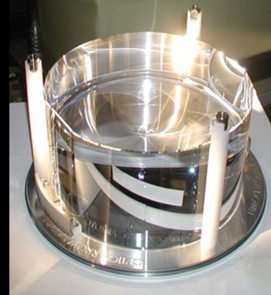
Figure 4. Input test mass (mirror). Each mirror weighs 40 kg (about 88 lbs) and is made from pure fused silica glass. Courtesy Caltech/MIT/LIGO Laboratory
Fused silica was chosen for the test masses because it has high chemical purity and resistance. It also has robust thermal resistance and low thermal expansion. Additionally, it has increased transparency from the ultraviolet to the infrared spectral range.
The LIGO’s laser is an infrared (IR) laser beam, and the absorption of this IR radiation could cause heating and alter the optics of the mirrors and their reflective capabilities. The accurate measurements taken by the observatory heavily rely on the test masses, as vibrations in LIGO’s mirrors indicate the detection of gravitational waves.
Silica, specifically fused silica, was chosen for the construction of the mirrors used in LIGO due to several unique properties:
Fused silica has excellent optical properties, including high transparency from the ultraviolet to the infrared spectral range. This property is crucial for the mirrors used in LIGO, which must effectively reflect the observatory’s laser beam. Fused silica has high chemical purity and resistance. This ensures that the mirrors remain unaffected by potential chemical reactions. As a result, the mirrors maintain their effectiveness over time.
Fused silica also has a low thermal expansion coefficient. This property means the material does not expand or contract significantly with temperature changes. The stability and accuracy of the mirrors are important because changes in their dimensions could impact the detection of gravitational waves.
Steel and silica are integral to the structure and functionality of LIGO.
LIGO’s critical structural components’ vacuum tubes are fabricated from stainless steel 304L. This material offers the required strength, durability, and thermal stability.
The mirrors in LIGO, vital for gravitational wave detection, are crafted from fused silica. This material’s unique optical properties and low thermal expansion coefficient make it the perfect choice for this application.
The choice of steel and silica as the primary materials for LIGO’s construction underscores the unique properties of these materials. Their strength, durability, and thermal stability, among other attributes, render them ideal for this revolutionary scientific project.
Thermal conductivity, a fundamental property of materials, plays a pivotal role in the design and functioning of the Laser Interferometer Gravitational-Wave Observatory (LIGO). It quantifies a material’s capacity to conduct heat, defined as the quantity of heat (in watts) transferred through a square meter of material one meter thick per degree of temperature gradient (in Kelvin). A material with a higher thermal conductivity can transfer heat more efficiently.
In the context of LIGO, thermal conductivity is instrumental in managing heat dissipation, reducing thermal noise, and maintaining the stability of the instruments.
In LIGO, it’s crucial to manage heat dissipation effectively. The laser system of the observatory generates heat, which needs to be efficiently dissipated to prevent potential damage due to overheating. LIGO’s laser system efficiently dissipates heat thanks to the high thermal conductivity of materials like steel and silica. This ensures safe and effective operation.
Thermal noise, the random motion of particles due to thermal energy, can interfere with LIGO’s measurements. Therefore, minimizing this noise is crucial for accurately detecting gravitational waves.
Materials with high thermal conductivity help reduce thermal noise by transferring heat effectively from the regions where measurements are conducted. Steel is used in the vacuum tubes, while silica is used in the mirrors.
The stability of LIGO’s instruments is crucial for accurately detecting gravitational waves. Temperature changes can cause materials to expand or contract, potentially affecting the stability of the instruments. However, materials with high thermal conductivity can quickly conduct heat away, minimizing temperature fluctuations and helping maintain instrument stability.
Thermal conductivity plays a crucial role in LIGO’s precise detection of gravitational waves, as it effectively handles heat dissipation, reduces thermal noise, and ensures instrument stability. This allows us to explore the universe in a whole new way.
Steel and silica are integral to many scientific instruments thanks to their unique thermal properties. At Thermtest, we serve a diverse clientele across a variety of industries. Our instruments, used for thermal conductivity analysis, often evaluate materials like steel and silica.
These materials find applications in the aerospace, electronics, and materials science sectors. Client testimonials from Thermtest underscore the significance of precise thermal conductivity measurements in their fields.

Figure 5. Successful Applications of steel and silica in scientific instruments.
Steel, known for its high strength and thermal conductivity, is popular for scientific instruments requiring high-pressure containment, such as autoclaves, chemical reactors, and pressure chambers. Its thermal conductivity enables efficient heat transfer, allowing precise temperature control within these instruments. Tuttnauer, a reputable company, manufactures a broad range of steel autoclaves for laboratories, medical facilities, and research institutions.
Heat exchangers are vital in various scientific instruments, including analytical devices and research equipment. Steel heat exchangers efficiently transfer heat between fluids or gases, facilitating temperature regulation in cooling, heating, and condensation processes. Alfa Laval, a renowned company, manufactures various heat exchangers, such as shell and tube, plate, and brazed heat exchangers, extensively utilized in scientific equipment and industrial operations.
Silica, or silicon dioxide, is a common material in producing optical components for scientific instruments. Silicon dioxide lenses, prisms, and windows are highly suitable for optical instruments like microscopes, spectroscopes, and lasers due to their remarkable thermal conductivity, transparency, and ability to withstand high temperatures.
Nikon, Zeiss, and Olympus, notable companies in the field, manufacture a variety of microscopes equipped with silica optics, catering to diverse areas like biological research, material science, and microscopy imaging.
Silica’s low thermal conductivity and superior insulating properties make it an excellent choice for insulation in scientific instruments. Commonly employed as a thermal insulator, its purpose is to hinder heat transfer and uphold consistent temperatures in delicate apparatus like cryogenic systems, furnaces, and high-temperature reactors.
Oxford Instruments, a well-regarded producer of cryogenic equipment and add-ons, frequently employs silica as an insulation material to sustain cold temperatures. This allows for the utilization of superconductivity and low-temperature physics in various applications.
Silica-based substrates, like silicon wafers, are crucial in fabricating electronic components and integrated circuits. Silica’s excellent thermal conductivity helps dissipate heat generated by electronic devices, improving their performance and reliability. Siltronic AG specializes in producing silicon wafers, which serve as substrates for electronic devices and integrated circuits, playing a vital role in the semiconductor industry.
Thermal conductivity measurements have been instrumental in a multitude of research studies. Instruments that measure heat transfer have been used to study composite materials, examine the heat properties of construction materials, and evaluate the heat conductivity of different parts used in aerospace technology.
These studies have substantially contributed to materials science, engineering, and technology advancements.
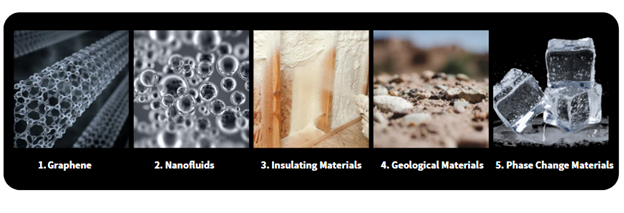
Figure 6. Significant experiments are leveraging thermal conductivity measurements.
In this particular experiment, the researchers’ objective was to measure the thermal conductivity of graphene, a single layer of carbon atoms. They used a modified transient hot bridge (THB) method to accurately measure graphene samples’ thermal conductivity.
The findings gave important information about the heat-related qualities of graphene. These qualities are crucial for its potential use in electronics, thermoelectric gadgets, and thermal control systems.
Researchers explored the thermal conductivity of nanofluids, colloidal nanoparticle suspensions in a base fluid. Using a transient hot wire apparatus, they measured the effective thermal conductivity of different nanofluid compositions at varying nanoparticle concentrations and temperatures.
The findings provided a greater understanding of nanofluids’ enhanced heat transfer properties, which can be applied in cooling systems, heat exchangers, and advanced thermal management technologies.
This study aimed to describe the heat conductivity of different insulating materials commonly used in the construction industry and energy-saving purposes. They used a guarded hot plate apparatus to measure the thermal conductivity of materials such as foam, aerogel, and insulation boards.
The thermal conductivity information acquired helped create insulation materials that are more effective at decreasing heat transfer and enhancing energy preservation in structures.
Researchers experimented to determine the thermal conductivity of geological materials like rocks and soils. They used a needle probe or thermal needle method to measure the thermal conductivity of samples collected from different locations.
The findings were crucial in studying geothermal energy, modelling heat transfer underground, and comprehending the thermal characteristics of the Earth’s subsurface.
In this experiment, scientists investigated the thermal conductivity of phase-change materials, which can store and release large amounts of thermal energy during phase transitions. They used a transient plane source (TPS) technique to measure the thermal conductivity of different PCMs at various temperatures and phase change states.
The acquired data helped choose and improve PCMs for storing thermal energy, solar power systems, and regulating temperature in electronics.
Incorporating steel and silica in LIGO’s design has led to significant implications and remarkable discoveries.

Figure 7. Laser Interferometer Gravitational-Wave Observatory photos. Courtesy Caltech/MIT/LIGO Laboratory
Steel provides essential stability and structural support to the LIGO instrument.
The steel-made L-shaped arms of LIGO’s interferometers play a crucial role in keeping the laser beams accurately aligned over long distances. Having stability is important for detecting gravitational waves with the necessary sensitivity. Any misalignment or distortion can introduce noise and affect the accuracy of the measurements.
The steel mirrors within LIGO are coated with a silica (glass) layer to enhance their reflectivity.
Silica exhibits superb optical characteristics, including outstanding transparency and minimal absorption, enabling the mirrors to reflect laser light in the interferometers efficiently. This reflective coating allows the laser beams to bounce back and forth multiple times, amplifying the signal and increasing the sensitivity of gravitational wave detection.
Steel is also utilized in LIGO’s seismic isolation systems, designed to minimize ground vibrations’ effects on the interferometers.
The main optical components of the instrument, such as the mirrors coated with silica, are hung from steel wires or chains, which effectively protect them from disruptions caused by earthquakes, wind, or human actions. This isolation ensures that the interferometers remain undisturbed by external noise, allowing for the precise measurement of gravitational waves.
Silica’s low thermal expansion coefficient is a crucial characteristic that aids in precisely detecting gravitational waves. The thermal expansion of materials can introduce noise and distort the measurements.
The thermal impact is reduced by silica’s low coefficient of thermal expansion, guaranteeing the accurate detection of tiny displacements caused by gravitational waves without any disruption from temperature changes.
LIGO’s design choices involving steel and silica have led to groundbreaking discoveries in astrophysics. Notably, in 2015, LIGO made the first direct observation of gravitational waves, confirming Albert Einstein’s general theory of relativity. Since then, numerous gravitational wave events, including binary black hole mergers and binary neutron star collisions, have been detected.
The findings have offered an unparalleled understanding of the characteristics of black holes, neutron stars, and how gravity acts, creating fresh opportunities to explore the cosmos.
Using steel and silica in LIGO’s design has enabled the instrument to achieve the sensitivity, stability, and precision required for detecting gravitational waves. These materials play critical roles in mitigating noise, optimizing optical performance, and maintaining the integrity of the interferometers.
The discoveries made possible by LIGO have revolutionized our understanding of the universe and have ushered in a new era of gravitational wave astronomy. The Laser Interferometer Gravitational-Wave Observatory (LIGO) stands as a testament to the power of scientific curiosity and the relentless pursuit of knowledge. The careful selection of materials and knowledge of thermal conductivity have played a crucial role in the design, leading to revolutionary discoveries that have fundamentally altered our comprehension of the cosmos.
The choice of steel and silica in LIGO’s construction was not arbitrary but a result of meticulous consideration of their unique properties. Steel, known for its strength, durability, and resistance to thermal expansion, provides the necessary stability and structural support. Silica, with its excellent optical properties, low thermal expansion coefficient, and high transparency, is integral to precisely detecting gravitational waves.
Thermal conductivity, a fundamental property of materials, has played a pivotal role in LIGO’s design and operation. It has been instrumental in managing heat dissipation, reducing thermal noise, and maintaining the stability of the instruments. The understanding and application of thermal conductivity have been crucial in enabling LIGO to detect the faint cosmic signals of gravitational waves.
The use of thermal conductivity measurements extends beyond LIGO. It has been utilized in a range of scientific experiments, encompassing the investigation of the thermal characteristics of graphene and nanofluids and the analysis of insulating materials and geological samples. These studies have contributed significantly to technological advancements in materials science, engineering, and technology.
LIGO’s design choices have led to remarkable discoveries in astrophysics. The first direct observation of gravitational waves in 2015 confirmed Albert Einstein’s general theory of relativity. Since then, many occurrences of gravitational waves have been identified, offering an unparalleled understanding of the characteristics of black holes, neutron stars, and the dynamics of gravity.
In conclusion, the Laser Interferometer Gravitational-Wave Observatory (LIGO) is a shining example of the interplay between material science, thermal conductivity, and astrophysics. It underscores the importance of understanding and applying fundamental material properties in the design and operation of scientific instruments.
By utilizing thermal conductivity measurements and meticulously choosing materials, LIGO has acquired valuable insights, enabling the exploration of an uncharted realm in the cosmos. This breakthrough facilitates forthcoming discoveries and propels our comprehension of the universe to new heights.
Miller, M. C., & Yunes, N. (2019). The new frontier of gravitational waves. Nature, 568(7753), 469-476. https://doi.org/10.1038/s41586-019-1129-z
Unknown, U. (no date) Evolution of LIGO’s Detectors, Caltech. Available at: https://www.ligo.caltech.edu/page/facts (Accessed: 06 July 2023).
LIGO | Louisiana Tech University. https://www.latech.edu/research-innovation-enterprise/centers-of-excellence/applied-physics-studies/ligo/
Erickson, K.E. (2020) What is a gravitational wave?, NASA. Available at: https://spaceplace.nasa.gov/gravitational-waves/en/ (Accessed: 06 July 2023).
Gravitational Waves | Space. https://www.earthfacts.com/space/gravitational-waves/
Cosmophysics and Gravitational Universe | ICTP-AP | 国际理论物理中心(亚太地区). https://ictp-ap.org/page/cosmophysics-and-gravitational-universe
Binder, Marcel, et al. “Investigations on the Surface Quality of Grinded Inner Contours Using Different Manufacturing Strategies on Fused Silica.” Epj Web of Conferences, 2021, https://doi.org/10.1051/epjconf/202125503006.
Dikici, Birce, et al. “Investigation of Thermal Conductivity Variation of Biomass Products With Moisture.” 2017, https://doi.org/10.1115/power-icope2017-3195.
Kersting, Magdalena. “Free Fall in Curved Spacetime—How to Visualise Gravity in General Relativity.” Physics Education, 2019, https://doi.org/10.1088/1361-6552/ab08f5.